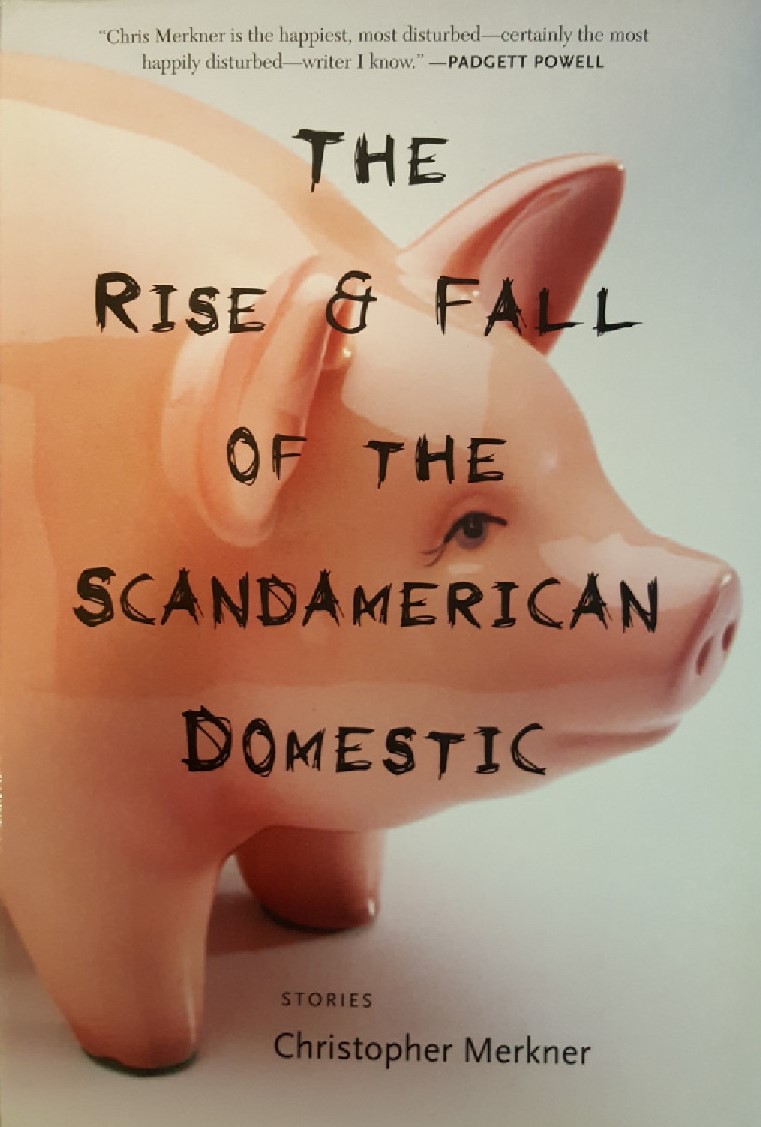Scandamerican Literary Find – Review of “The Rise & Fall of the Scandamerican Domestic” by Christopher Merkner

Going through “The O. Henry Prize Stories 2015”, edited by Laura Furman, I was really taken by the story “Cabins” by Christopher Merkner. So taken, I just had to read more by Merkner. A search of Amazon uncovered “The Rise & Fall of the Scandamerican Domestic: Stories”, Merkner’s short story collection, published by Coffee House in 2013.
I feel a certain kinship with Merkner. We were both raised in the northern Illinois/southern Wisconsin area; we are both of Scandanavian descent; as a husband and father, I could identify with the narrator of most of the stories. Additionally, I have always had a strong attraction to American writers of the 60’s, and early 70’s. Merkner’s writings shows significant influence from postmodernist writers such as Donald Barthelme, Kurt Vonnegut, Raymond Carver, and Richard Brautigan. Markner’s language is simple, straightforward, and spare.
Thematically, Merkner provides a fresh, updated look at ground previously explored by John Updike in “Rabbit Runs” and the rest of the Rabbit series. While the Rabbit series neatly progresses in chronological order, Merkner’s stories hop around most of the adult narrator’s married life. The stories are all evidently about the same character. Stories about the narrator’s life after his son has grown and left home are intermixed with stories about a young married couple and stories about a couple with young children. Which allows us to see the development of the narrator and provides some insights into his relationship with his grown son.
Like Barthelme and Brautigan, Merkner steps outside of what we expect as the ordinary. Yet his characters don’t seem to be aware that they are acting oddly. At times, timelines seem to be surreal. In the story, “Scandamerican Domestic”, the father tells his children, out of the blue, that he’ll “take them to Sweden in the morning”. And in the next paragraph, they are on the plane to Sweden, and then they are staying in a dream/nightmare like hotel room/cottage.
The actions and reactions of the characters in his story are also often “not quite right”, and sometimes actually downright disturbing. In “Last Cottage” (the last story in the collection), the townspeople of “Slocum Lake” have been trying to get rid of out-of-towners who own the last cottage on the lake that has not been commercially developed. The steps taken by these, in their own view, normal, hardworking people, go way beyond what we would normally consider “normal”, or even “sane”. In the view of the townspeople the Larsons are a nice enough couple, with four-year-old twin children. The Larsons have been coming to Slocum Lake for 15 years, trying to “live the traditional way for vacationers.” Which the locals find “depressingly outmoded.” The town bands together to sabotage the Larson’s property. Their actions always seem to result in the Larsons not only surviving, but coming out stronger. The story climaxes with a tragedy that is at least allowed to happen by the townspeople that have been staking out and spying on the Larsons on what is probably the Larson’s last trip to Slocum Lake.
With the exception of the last story, “Last Cottage”, names are not used. And then, there is only the last names of the outsiders and the last name of one townsperson. This language, the lack of names, unreal timelines, and outsized actions of the characters, Merkner elevates the stories beyond the feelings and experiences of a single character. He helps us to look beyond ourselves and to see a more universal condition.